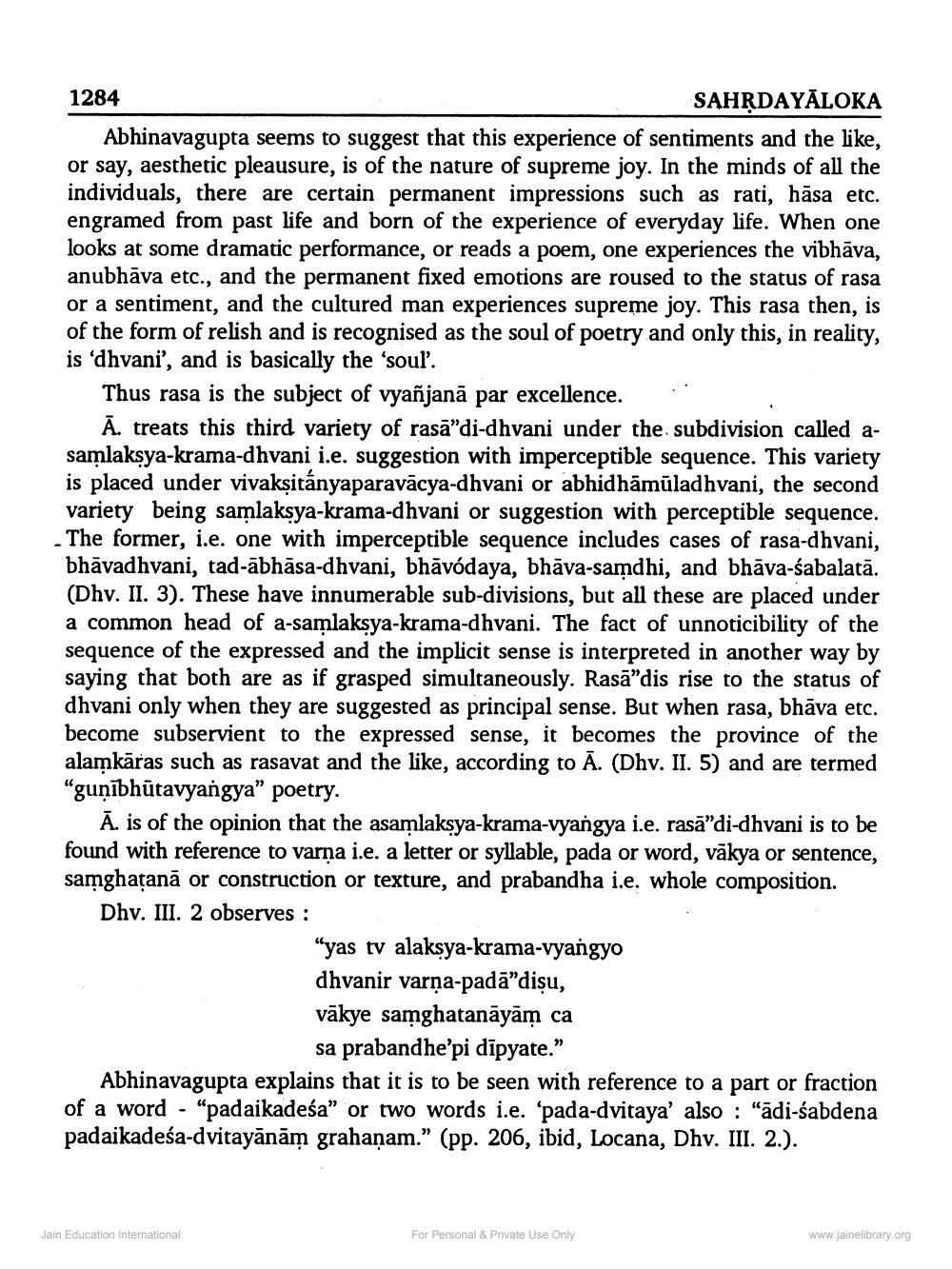________________
1284
SAHRDAYĀLOKA Abhinavagupta seems to suggest that this experience of sentiments and the like, or say, aesthetic pleausure, is of the nature of supreme joy. In the minds of all the individuals, there are certain permanent impressions such as rati, hāsa etc. engramed from past life and born of the experience of everyday life. When one
me dramatic performance, or reads a poem, one experiences the vibhāva, anubhāva etc., and the permanent fixed emotions are roused to the status of rasa or a sentiment, and the cultured man experiences supreme joy. This rasa then, is of the form of relish and is recognised as the soul of poetry and only this, in reality, is ‘dhvani', and is basically the ‘soul.
Thus rasa is the subject of vyañjanā par excellence.
Ā. treats this third variety of rasā”di-dhvani under the subdivision called asamlaksya-krama-dhvani i.e. suggestion with imperceptible sequence. This variety is placed under vivaksitanyaparavācya-dhvani or abhidhāmūladhvani, the second variety being samlaksya-krama-dhvani or suggestion with perceptible sequence. The former, i.e. one with imperceptible sequence includes cases of rasa-dhvani, bhāvadhvani, tad-ābhāsa-dhvani, bhāvódaya, bhāva-samdhi, and bhāva-sabalatā. (Dhv. II. 3). These have innumerable sub-divisions, but all these are placed under a common head of a-samlaksya-krama-dhvani. The fact of unnoticibility of the sequence of the expressed and the implicit sense is interpreted in another way by saying that both are as if grasped simultaneously. Rasā”dis rise to the status of dhvani only when they are suggested as principal sense. But when rasa, bhāva etc. become subservient to the expressed sense, it becomes the province of the alamkāras such as rasavat and the like, according to Ā. (Dhv. II. 5) and are termed "gunibhūtavyangya” poetry.
Ā. is of the opinion that the asamlaksya-krama-vyangya i.e. rasā"di-dhvani is to be found with reference to varņa i.e. a letter or syllable, pada or word, vākya or sentence, samghatanā or construction or texture, and prabandha i.e. whole composition. Dhv. III. 2 observes :
“yas tv alaksya-krama-vyangyo dhvanir varņa-padā”dişu, vākye samghatanāyām ca
sa prabandhe’pi dīpyate." Abhinavagupta explains that it is to be seen with reference to a part or fraction of a word - "padaikadeśa” or two words i.e. 'pada-dvitaya' also : "ādi-sabdena padaikadeśa-dvitayānām grahaņam.” (pp. 206, ibid, Locana, Dhv. III. 2.).
Jain Education International
For Personal & Private Use Only
www.jainelibrary.org




